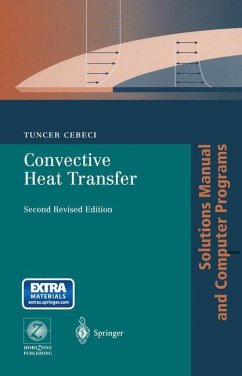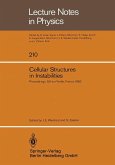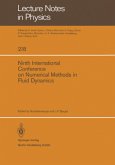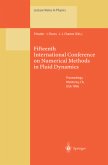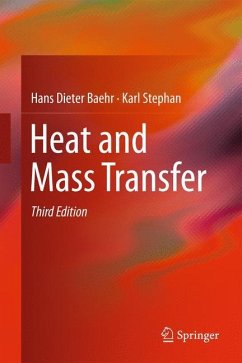This book presents the solutions to the problems in Convective Heat Transfer. It also contains computer programs to solve homework problems on the CD accompanying the book. Included on the CD are computer programs based on differential and integral methods. Those on differential methods are for two-dimensional flows and allow the user to solve compressible external laminar and turbulent boundary layers, forced and free convection problems between two vertical parallel plates, wall jet problems, turbulent free jet problems, mixing layer between two uniform streams at different temperatures and internal laminar and turbulent flow problems with fully developed velocity profiles. Those programs based on integral methods are for two-dimensional flows and include Thwaites' method for momentum transfer, Smith-Spalding's method for heat transfer, Michel's method for predicting transition, Head's method for momentum transfer and Ambrok's method for heat transfer.
Hinweis: Dieser Artikel kann nur an eine deutsche Lieferadresse ausgeliefert werden.
Hinweis: Dieser Artikel kann nur an eine deutsche Lieferadresse ausgeliefert werden.
From the reviews of the second edition:
"The book is addressed to senior undergraduate students in aerospace, chemical, civil and mechanical engineering, but is useful to anyone interested in environmental science. [...] The book gives a very useful engineering approach to the treated problems from the point of view of the author, a scientist with substantial contributions in the study of boundary layer problems, who likes to express things clearly and directly." (Mathematical Reviews 2003h)
"[The] monograph reflects many-years experience of the author in modelling of fluid flows, and the material is presented in a clear and well-organized fashion. Thus the book is highly recommended reading for those wishing to be familiar with practical numerical modelling in fluid mechanics." (Zentralblatt Math 2005, 1057, page 87)
"This monograph describes physical and computational aspects of convective heat transfer, together with recent advances in numerical methods and turbulence modelling. ... A CD-ROM accompanying this book contains FORTRAN codes of computer programs. ... The monograph reflects many-years experience of the author in modelling of fluid flows, and the material is presented in a clear and well-organized fashion. Thus the book is highly recommended reading for those wishing to be familiar with practical numerical modelling in the fluid mechanics." (Oleg Titow, Zentralblatt MATH, Vol. 1057 (8), 2005)
"This book is dedicated to convective heat transfer mainly in 2D boundary layers (including axisymmetric flow) and duct flows. It combines the fundamental aspects with cases of practical interest. ... The book is addressed to senior undergraduate students in aerospace, chemical, civil and mechanical engineering, but is useful to anyone interested in environmental sciences. ... The book gives a very useful engineering approach to the treated problems from the point of view of the author ... who likes to express things clearly and directly."(Corneliu Berbente, Mathematical Reviews, 2003 h)
"This book is a modern presentation of the physical and computational aspects of convective heat transfer in laminar and turbulent boundary-layer flows ... . The book also has a large number of homework problems and a CD which contains computer programs to solve external and internal flows based on differential and integral methods." (ETDE - Energy Database, 2002)
"The book is addressed to senior undergraduate students in aerospace, chemical, civil and mechanical engineering, but is useful to anyone interested in environmental science. [...] The book gives a very useful engineering approach to the treated problems from the point of view of the author, a scientist with substantial contributions in the study of boundary layer problems, who likes to express things clearly and directly." (Mathematical Reviews 2003h)
"[The] monograph reflects many-years experience of the author in modelling of fluid flows, and the material is presented in a clear and well-organized fashion. Thus the book is highly recommended reading for those wishing to be familiar with practical numerical modelling in fluid mechanics." (Zentralblatt Math 2005, 1057, page 87)
"This monograph describes physical and computational aspects of convective heat transfer, together with recent advances in numerical methods and turbulence modelling. ... A CD-ROM accompanying this book contains FORTRAN codes of computer programs. ... The monograph reflects many-years experience of the author in modelling of fluid flows, and the material is presented in a clear and well-organized fashion. Thus the book is highly recommended reading for those wishing to be familiar with practical numerical modelling in the fluid mechanics." (Oleg Titow, Zentralblatt MATH, Vol. 1057 (8), 2005)
"This book is dedicated to convective heat transfer mainly in 2D boundary layers (including axisymmetric flow) and duct flows. It combines the fundamental aspects with cases of practical interest. ... The book is addressed to senior undergraduate students in aerospace, chemical, civil and mechanical engineering, but is useful to anyone interested in environmental sciences. ... The book gives a very useful engineering approach to the treated problems from the point of view of the author ... who likes to express things clearly and directly."(Corneliu Berbente, Mathematical Reviews, 2003 h)
"This book is a modern presentation of the physical and computational aspects of convective heat transfer in laminar and turbulent boundary-layer flows ... . The book also has a large number of homework problems and a CD which contains computer programs to solve external and internal flows based on differential and integral methods." (ETDE - Energy Database, 2002)

